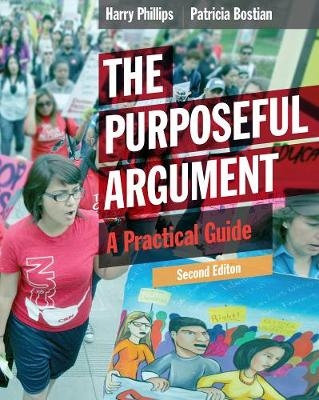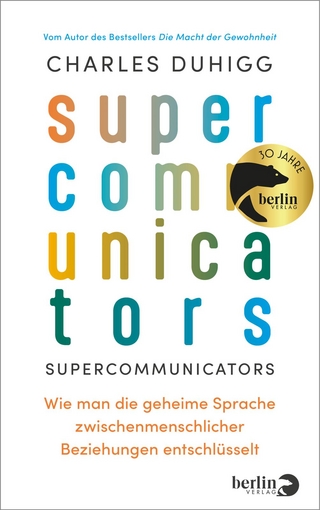
The Purposeful Argument
Wadsworth Publishing Co Inc (Verlag)
978-1-285-43805-4 (ISBN)
- Titel erscheint in neuer Auflage
- Artikel merken
Emphasizing the practical and the local, THE PURPOSEFUL ARGUMENT: A PRACTICAL GUIDE, 2E effectively brings argument into real life with community-based writing activities, illustrating that the tools and skills of argument are critical to readers today-and wherever their careers take them. With a focus on accessibility, the text encourages students to argue in response to issues in a variety of environments-school, workplace, family, neighborhood, social-cultural, consumer, and concerned citizen-and learn how argument can become an essential negotiating skill in everyday life. It offers thorough treatments of Toulmin-based and Rogerian approaches to argument as well as teaches the value of fully understanding the opposition, the importance of aiming for the middle ground, and how to use a microhistory to forge an unconventional position. The only introduction to argument written with the today's diverse student body in mind, THE PURPOSEFUL ARGUMENT uses vivid explanations, detailed examples, and practical exercises to guide students step by step through the process of building an effective argument. In addition, a rich anthology of arguments covers a wide range of today's leading issues.
Patricia Kennedy Bostian is the author of over 90 scholarly works for presses such as Greenwood and Facts on File. She also is the editor of the peer-reviewed scholarly journal TEACHING AMERICAN LITERATURE: A JOURNAL OF THEORY AND PRACTICE (http://cpcc.edu/taltp). For 29 years she has taught literature, composition and humanities courses for several two- and four-year institutions, including Central Piedmont Community College, the University of South Carolina and Johnson C. Smith University. She completed an M.A. in English and doctoral coursework in composition/rhetoric at the University of South Carolina and now is completing an M.A. in Humanities from California State University. Harry Phillips earned a Ph.D. in English from Washington State University (WSU) in 1994 and an M.A. in English with a minor in Education from North Carolina Central University in 1988. From 1994 to 2009, he was Instructor of English at Central Piedmont Community College in Charlotte, North Carolina, where he regularly taught Argument-Based Research and a range of American literature courses. He began teaching argument in 1993 at WSU and recommended that this course be a part of the North Carolina Community College Common Course Library, a suggestion that led to the course being adopted across the N.C. Community College system. He continues to view argument as an essential set of skills both for two- and four-year college students, as well as for everyday people intent on crafting effective communication. Dr. Phillips was Curator of Native Plants at the North Carolina Botanical Garden and the principal author of GROWING AND PROPAGATING WILD FLOWERS (University of North Carolina Press, 1985). Since retiring from CPCC, he spends his time as a mediator, climate crisis activist and avid gardener.
Part I: HOW TO APPROACH ARGUMENT IN REAL LIFE.
1. Argue with a Purpose.
What Argument Is and What Argument Is Not. “Graduating Debtors” by Thomas Frank. Recognize Where Argument Is Appropriate in Real Life. Argue About Issues that Matter to You. Establish Local Context for an Issue Through the Research Process. Recognize Why Arguments Break Down. Match Argument with Purpose.
2. Explore an Issue that Matters to You.
Determine What Matters to You and Why. Choose an Issue within a Topic. Pre-Think About Your Issue. Define and Target Your Audience. Stake, Defend, and Justify Your Claim. Vary the Support You Bring to an Argument. Working with a Target Audience: Two Examples. Argue at the Right Moment. Getting Started.
Part II: HOW TO ESTABLISH CONTEXT THROUGH RESEARCH.
3. Develop a Research Plan.
Use Reference Works, Encyclopedias, and Topic Overviews Profitably. Gather Search Terms. Use Search Engines to Find Internet Sources on the Surface Web and on the Deep Web. Perform Keyword Queries. Find News Sites and Use RSS Feeds to Receive Updates. Find and Use Databases in Libraries. Find and Use Primary Sources. Find and Use Government Sources. Find and Use Multimedia Sources. Find Books.
4. Evaluate and Engage with Your Sources.
Take Notes, Read Critically, and Evaluate Internet Sites. Take Notes, Read Critically, and Evaluate Articles. Take Notes and Read Books Critically. Take Notes and Evaluate Primary Sources. Introduce and Comment on Sources. Quote and Cite Quotations. Summarize and Cite Summaries. Paraphrase and Cite Paraphrases. Avoid Plagiarism. Documentation: Works Cited Page.
5. Read Critically and Avoid Fallacies.
Define Fallacies. Identify and Avoid Fallacies. Avoid Fallacies of Choice. Avoid Fallacies of Support. Avoid Fallacies of Emotion. Avoid Fallacies of Inconsistency.
6. Work Fairly with the Opposition.
Why the Opposition Matters. Resist Easy Generalizations. Listen to Local Voices. Summarize Other Voices Fairly. Value Expertise Over Advocacy. Avoid Bias When You Summarize. Find Points of Overlap. Respond to Other Views.
Part III: HOW TO PLAN, STRUCTURE AND DELIVER AN ARGUMENT.
7. Develop a Strategy.
8. Consider Toulmin-Based Argument.
9. Consider Middle Ground and Rogerian Argument, and Argument based on Microhistory.
10. Build Arguments.
11. Support an Argument with Fact (Logos), Credibility (Ethos), and Emotion (Pathos).
Part IV: HOW TO TAKE OWNERSHIP OF YOUR ARGUMENT: A STYLE GUIDE.
12. Enhance Your Argument with Visuals and Humor.
What Are Visual Arguments? Read Visual Arguments. Use Humor in Your Argument. When Is Humor Appropriate?
12. Develop and Edit Argument Structure and Style.
Part V: AN ANTHOLOGY OF ARGUMENTS.
Intersections: Contemporary Issues and Arguments.
SCHOOL/ACADEMIC COMMUNITY.
WORKPLACE COMMUNITY.
FAMILY/HOUSEHOLD COMMUNITY.
NEIGHBORHOOD COMMUNITY.
SOCIAL/CULTURAL COMMUNITY.
CONSUMER COMMUNITY.
CONCERNED CITIZEN COMMUNITY.
CLASSIC AMERICAN ARGUMENTS.
STUDENT-AUTHORED ARGUMENTS.
Linda Gonzalez, Driving to a Reasonable Solution. Blaine Schmidt, Red Light Cameras-Pursuing Profit Without Process Or Purpose. Ben Szany, Vouching for Our School System?
| Verlagsort | Belmont, CA |
|---|---|
| Sprache | englisch |
| Maße | 188 x 232 mm |
| Gewicht | 1025 g |
| Themenwelt | Sachbuch/Ratgeber ► Beruf / Finanzen / Recht / Wirtschaft ► Briefe / Präsentation / Rhetorik |
| Schulbuch / Wörterbuch ► Wörterbuch / Fremdsprachen | |
| Geisteswissenschaften ► Sprach- / Literaturwissenschaft ► Sprachwissenschaft | |
| Sozialwissenschaften | |
| ISBN-10 | 1-285-43805-1 / 1285438051 |
| ISBN-13 | 978-1-285-43805-4 / 9781285438054 |
| Zustand | Neuware |
| Haben Sie eine Frage zum Produkt? |
aus dem Bereich



